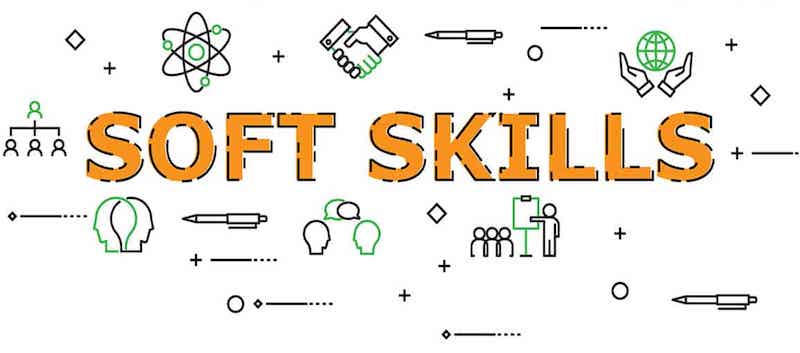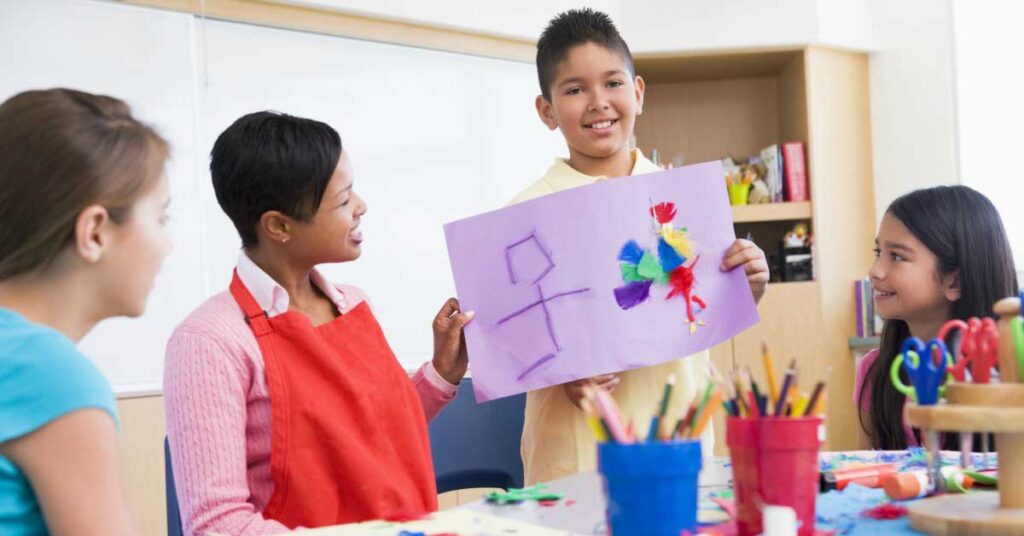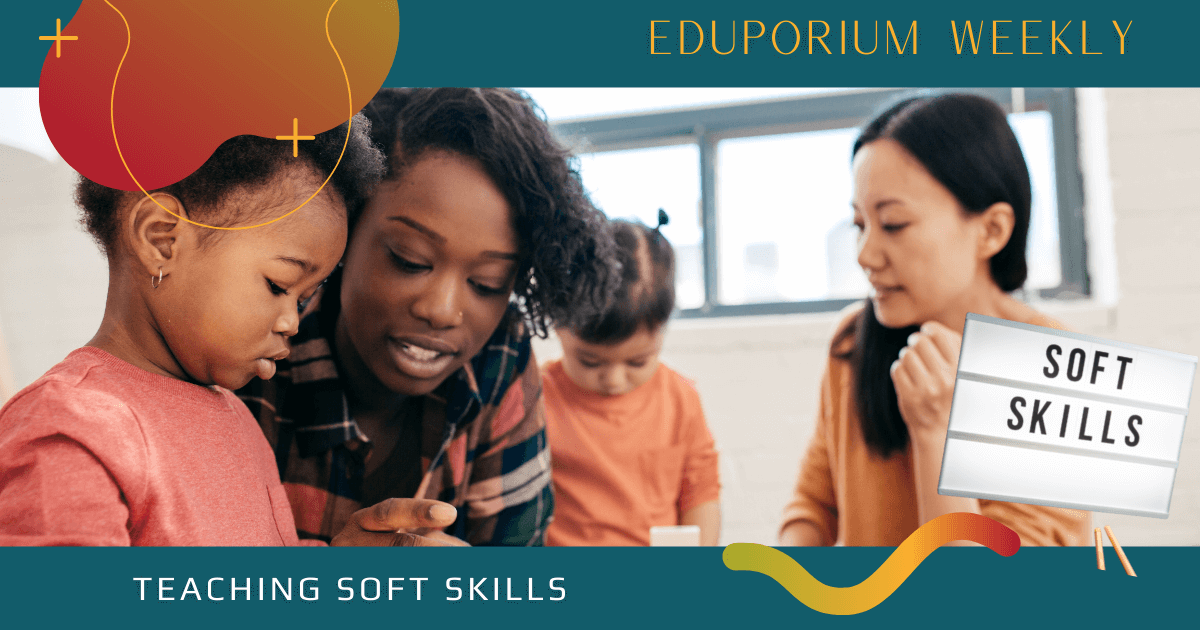Teachers are told all the time (including plenty of times by us) that there are certain skills their students are going to need. Dictated by the current economy and the direction in which it is moving, many of these skills are related to science, technology, engineering, and math. They are commonly referred to as STEM skills and include proficiency in coding, computer science, computational thinking, and other areas. These hands-on, physical skills are also commonly called hard skills and certainly will be valuable to students in their futures. What about soft skills, though? What are they, why are they so talked about, and what can teachers do to ensure students develop these, too?
Soft Skills are Important for the Future
We preach about how educators need to keep up with innovations so students are in the best position to succeed. During their time in K-12 classrooms, teachers do all they can to better equip these students with skills to succeed in a dynamic work environment. Questions routinely arise, however, about whether they should be spending more time helping students develop hard skills or soft skills and which sets are more important. This week, we're focusing on the importance of soft skills, so, for now, we’ll say those are just as important. To start enhancing the experiences that students have, teachers should avoid spoon feeding them correct answers. Instead, they can work with them in a hands-on way to help them develop useful skills rather than just memorizing content.
One of the most valuable soft skills students can develop is independent learning. There is always room to continue improving this skill and teachers can actually help through their instruction. By leading by example and continuously showing students learn how to learn, they will be more likely to develop their independent skills and bring them to a very productive level. This is also valuable because there is no one technology currently on the horizon that today’s students will use forever. Technology is developing at such a rapid rate that something being used today might be obsolete in a couple years. The same goes for something that comes out in three years. It could run its course in five or six months. We simply don’t know. One of the best ways to help today’s students is to preach the importance of learning how to learn.
While educators scramble to teach STEM subjects to kids, many soft skills can be learned in any classroom. Communication, for example, can be learned in an English class. Students can learn collaboration in a writing class and they can learn critical thinking in a history class. It doesn’t always have to be a science class for students to work on their real-world skills. Teachers should be helping students learn to carry the skills they learn in their non-STEM classes into their STEM classes. Since so many jobs are now STEM jobs, entering the job pool with these kinds of skills is very important. Somebody with a scientific mind who can also quickly weigh potential outcomes will be valuable in our quick-paced economy, for example, as they bring their soft and STEM skills together.
Soft Skills vs. Tech Skills
Of course, students will need some level of tech skills based on the current economy. The thing is, however, that they need more than that. It's often the soft skills that help in multiple facets of potential future careers. In fact, some research indicates that over 50 percent of employers believe soft skills are more important than hard skills. As important as they are, it’s often difficult to teach soft skills. Educators can teach technical skills through repetition and practice, but it’s tougher to teach the soft skills. We know that hard skills, like problem solving, project management, and coding are key to maintaining a sustainable career. Under the right leadership, it’s easy for just about anybody to master these. The soft skills, however, are just as important. Everyone needs them in order to balance out their skill sets and provide the best possible experience.
Among the soft skills that are the most crucial for modern workers are leadership, communication, collaboration, and time management. Many employees work on teams, so these four soft skills being at the top of the list shouldn't be a surprise. Basically, students need to be proficient with both hard and soft skills because that’s what potential employers will demand. They will need to know how to build and maintain relationships, engage with peers, and adjust their approaches accordingly. Part of the modern economy involves a willingness to adapt to whatever curveballs come into play. So, having experience with doing this effectively is very important. Creating school environments that replicate these experiences is one of the best things educators can do.
A common phrase in professional settings is “It’s not what you know, but who you know,” and this resonates with us when it comes to hard and soft skills. Somebody can be a top-notch programmer and have a bunch of great skills, but may be less valuable to an employer because they lack solid communication skills, for example. Soft skills and relationship building are not really an option in today’s economy. So, that means they shouldn't be an option in today's curricula and students should be developing them from early on. As we said, it’s tricky to teach soft skills, but students can pick them up by observing teachers and peers. As time goes on, they should start improving their soft skills and, ultimately, develop into the total package. At that point, they'll be more ready to take on the future with an ideal mixture of hard and soft skills.

How to Teach Soft Skills Within the Curriculum
Just as the development of STEM skills is a byproduct of increasingly innovative curricula, students can also build necessary soft skills as they’re learning curricular content. Though each student is unique and learns in different ways, they all generally have the same goal. They want to end up employed in a field that they are interested in and one that's profitable. Whether they’re entering a STEM field, attending college, or getting a jump on their future in another way, everybody needs to have a reliable set of soft skills. These soft skills are important in any environment and the focus on them is becoming more and more intense in this day and age. Commonly referred to as “people skills,” students can learn the soft skills they need through carefully planned classroom exercises and regular opportunities to work on them.
The beauty of developing soft skills is that the process can gel really well with current curricula. Hands-on or problem-based activities give children the opportunity to work on critical thinking, for example. This is a staple skill for workers in today’s economy. This kind of work also helps unlock a student’s creativity, which, of course, is another key soft skill. With so much focus on preparing students to succeed on tests, however, teaching them the important soft skills often takes a back seat. This, unfortunately, creates a disconnect between the skills students possess and the skills they will need in the real world. There are not too many employers who want to hire new graduates who are good at taking tests. They don’t need that skill in the real world. They need to know how to collaborate, think critically, ask questions, and tap their creativity.
Some of the most important soft skills are communication, maintaining a positive attitude, collaboration, critical thinking, and professional skills. Weaving each of these into the curriculum does take some creativity, but educators can and should try. Take communication, for example. Students can build communication skills by routinely taking part in group work. This also helps them work on their collaboration skills and, since so much 21st century work is collaborative, it's a great way to kill two birds with one stone. It also helps kids develop speaking and listening skills—two more things that could take them a long way. In terms of critical thinking, it’s easy to find some engaging brain teasers or games to get students thinking every day. And, finally, professional skills, like courtesy, growth mindset, and leadership should start to manifest when students continue to learn in a way that mirrors the real world.
Using Arts Education to Help Build Soft Skills
Even though it’s not always technical, art has certainly made its way into the 21st century education discussion. Among other benefits, it's the most common way for educators to change STEM to STEAM. By producing works of art—those that include technology and those that don't—students inherently develop an eye for creativity. Regular exposure to creating and discussing art help them learn key interpersonal and communication skills while they interact with their peers. Besides communication, art classes help students build other soft skills, too—skills like observation, articulation, reimagining the usual, risk taking, confidence, and leadership among others. These, of course, are the kinds of soft skills that will become very useful down the road.
One of the most prominent and seldom recognized skills that art experiences can help students develop is leadership. Just by looking at a piece of art, students can creatively visualize what the artist was thinking, explain what they see themselves, provide sound reasoning for what they think the piece represents, and question what else they would like to learn about the art. If these sound like some useful ways to approach problem solving in the 21st century, that would be correct. Allowing students to practice learning like this can serve them very well in the future. These kinds of inquiry-based learning methods tap into a student's’ observation skills. They also help them fine tune other skills in the process, like providing evidence or giving concise explanations.
With good leadership also comes good communication and communicating effectively is another one of today’s most important soft skills. In an art class, after using their creative talents to complete a work of art or dissect someone else’s, students can collaborate with their classmates to share what they’ve learned. This, of course, presents a perfect opportunity to work on communication skills since they can practice listening with intention, speaking with clarity, and sharing responsibility in making sure each of them understands what is being discussed. Communication is obviously a two-way street and it’s vitally important that students know how to walk in both of those proverbial directions. So, if your art classes need something extra this year, don’t be afraid to focus more on the soft skills.

Some of the Most Important Soft Skills for Today’s Students
We’ve been talking up their importance and, whether students are pursuing a STEM career or not, there are certain soft skills that will serve them very well. Some of them will be obvious but others might make you stop and think for a second. Since teachers and parents are probably spending a lot of time telling students that soft skills are just as important as hard skills, we’re capping this post with a look at some of the most important. At the top of that list is teamwork. At least half of people's time in the modern workforce is spent on group projects and somebody’s ability to work as part of a team could have a huge effect on their career. Plus, collaboration is known to enhance personal performance and seen as a stepping stone to achieving goals.
Next on the list is another skill we’ve already touched on and that’s problem solving. It is imperative that today’s students learn how to be vigilant and discover how to come up with quick and effective solutions to problems. Getting students out of their comfort zones and through activities littered with new challenges is one way to introduce this. Next, we have leadership, an incredibly important trait, but one that not everyone possesses. With the frequent nature of group work in today’s workforce, having strong leadership is something that serves many people well. Once again, interpersonal skills are something else that’s important. Since face-to-face communication has gone by the wayside in the social media age, this skill is frequently overlooked, but one that should not be.
Here’s another skill that does not seem to be losing importance anytime soon. We’ve been talking about it forever and trying to create educational experiences that highlight it. We’re talking about creativity. Students need to be confident in coming up with creative ideas, but also presenting them in innovative and effective ways. Creative thinking is perhaps the best way to grab the attention of peers, competitors, and employers. Finally, some of the other key soft skills students should develop are time management, critical thinking, and adaptability. Communication is key and building relationships will take students further—whether pursuing a future in STEM or another industry. The soft skills are going to help them out in a major way.
For the latest EdTech, STEM, and 21st century education news, follow us on Twitter and Instagram. Like us on Facebook, too, or sign up for our newsletter for announcements on the best EdTech deals around! Have an idea for the next Eduporium Weekly theme? Send us a message on any of our social media accounts!



